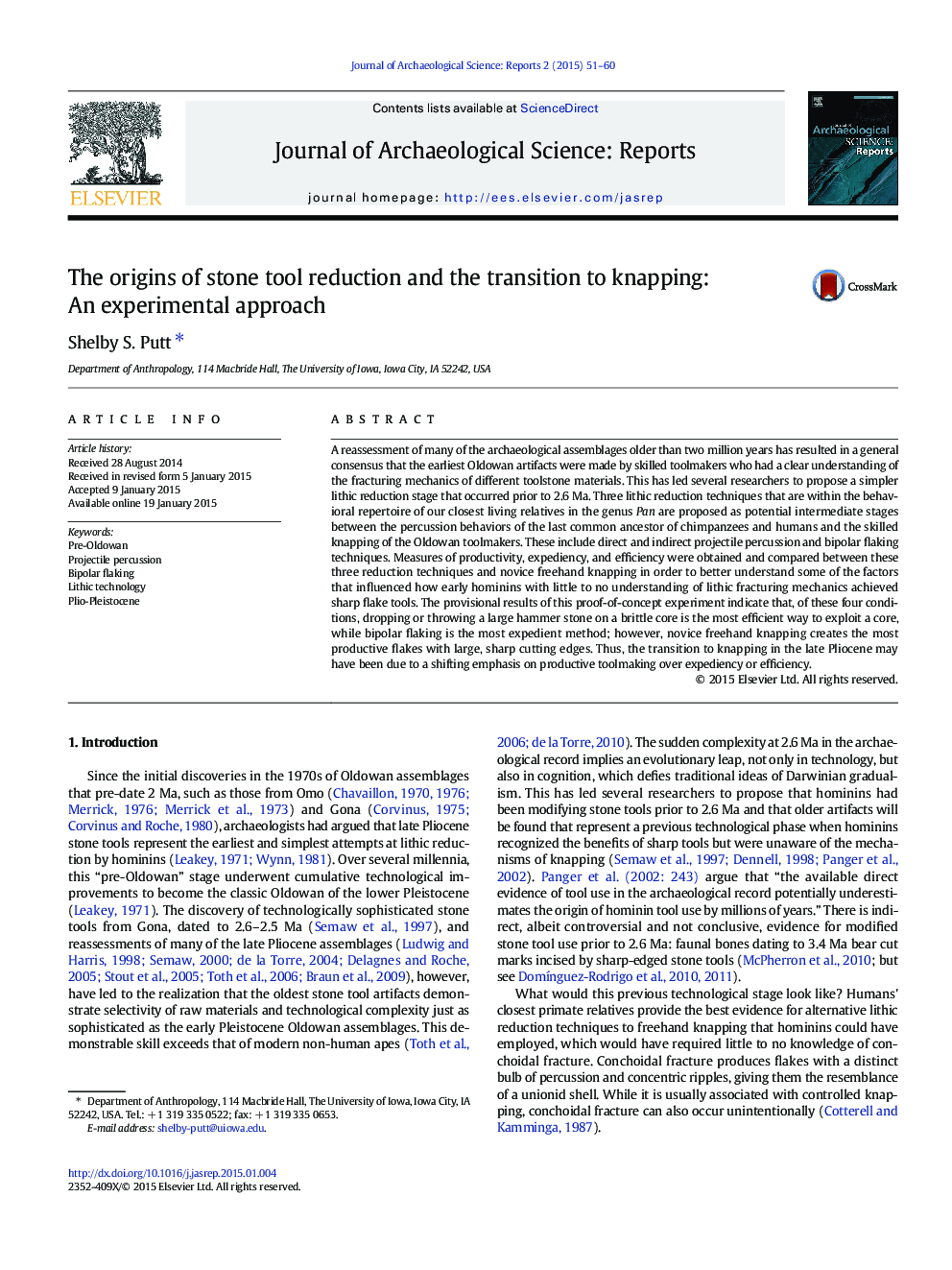| کد مقاله | کد نشریه | سال انتشار | مقاله انگلیسی | نسخه تمام متن |
|---|---|---|---|---|
| 10499986 | 944187 | 2015 | 10 صفحه PDF | دانلود رایگان |
عنوان انگلیسی مقاله ISI
The origins of stone tool reduction and the transition to knapping: An experimental approach
ترجمه فارسی عنوان
ریشه های سنگ ابزار کاهش و انتقال به سر و صدا: یک رویکرد تجربی
دانلود مقاله + سفارش ترجمه
دانلود مقاله ISI انگلیسی
رایگان برای ایرانیان
موضوعات مرتبط
علوم انسانی و اجتماعی
علوم انسانی و هنر
تاریخ
چکیده انگلیسی
A reassessment of many of the archaeological assemblages older than two million years has resulted in a general consensus that the earliest Oldowan artifacts were made by skilled toolmakers who had a clear understanding of the fracturing mechanics of different toolstone materials. This has led several researchers to propose a simpler lithic reduction stage that occurred prior to 2.6Â Ma. Three lithic reduction techniques that are within the behavioral repertoire of our closest living relatives in the genus Pan are proposed as potential intermediate stages between the percussion behaviors of the last common ancestor of chimpanzees and humans and the skilled knapping of the Oldowan toolmakers. These include direct and indirect projectile percussion and bipolar flaking techniques. Measures of productivity, expediency, and efficiency were obtained and compared between these three reduction techniques and novice freehand knapping in order to better understand some of the factors that influenced how early hominins with little to no understanding of lithic fracturing mechanics achieved sharp flake tools. The provisional results of this proof-of-concept experiment indicate that, of these four conditions, dropping or throwing a large hammer stone on a brittle core is the most efficient way to exploit a core, while bipolar flaking is the most expedient method; however, novice freehand knapping creates the most productive flakes with large, sharp cutting edges. Thus, the transition to knapping in the late Pliocene may have been due to a shifting emphasis on productive toolmaking over expediency or efficiency.
ناشر
Database: Elsevier - ScienceDirect (ساینس دایرکت)
Journal: Journal of Archaeological Science: Reports - Volume 2, June 2015, Pages 51-60
Journal: Journal of Archaeological Science: Reports - Volume 2, June 2015, Pages 51-60
نویسندگان
Shelby S. Putt,
